 French publisher Editions Ferenczi had a Verrou unique way of doing things. 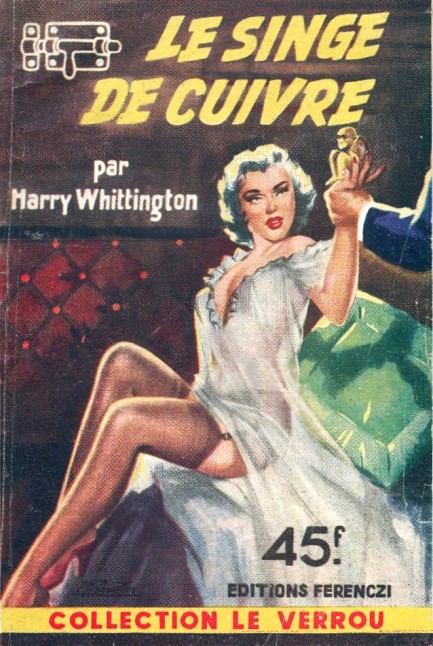
Collection le Verrou (The Lock Collection) consisted of 205 pocket-sized crime novels published in France by Editions Ferenczi from 1950 to 1959. Some were written by French authors using pseudonyms that sounded English or American, while other writers used their real names, such as Alexandra Pecker (yes, that's a real name) and René Poupon (idem). Other books were written by U.S. or British writers and had been previously published. For instance, above you see Le singe de cuivre by Harry Whittington, which you might know as The Brass Monkey, and below you'll find entries from Lawrence Blochman and English scribe Peter Cheney, better known as Peter Cheyney. The art on these books is generally quite colorful. The cover above was painted by Michel Gourdon, and below you'll find another piece from him, many efforts from Georges Sogny, and a couple from as-yet-unknowns. We really like Ferenczi's output, so expect us to share more covers from this publisher later. 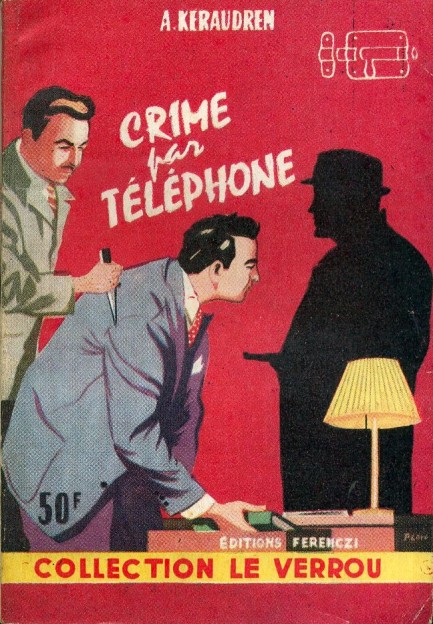 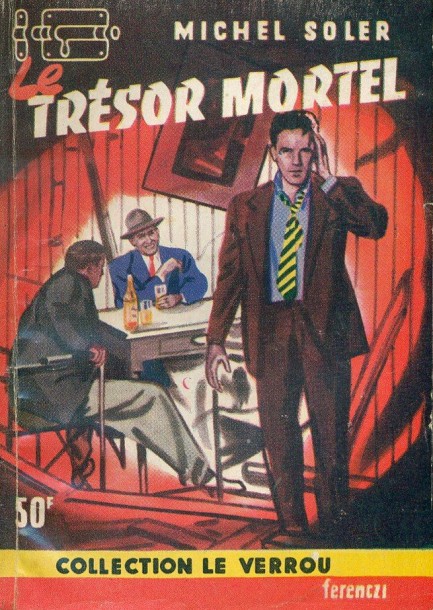 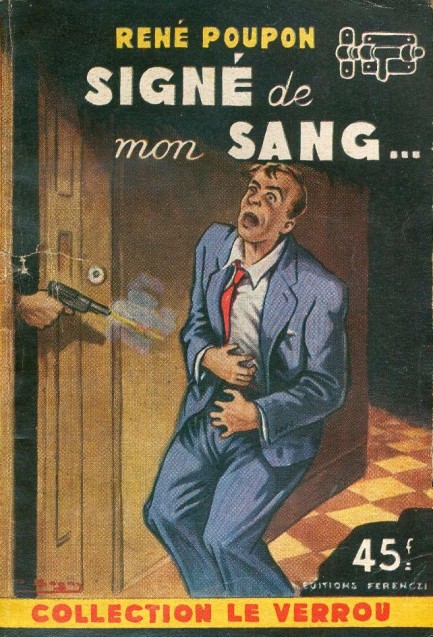 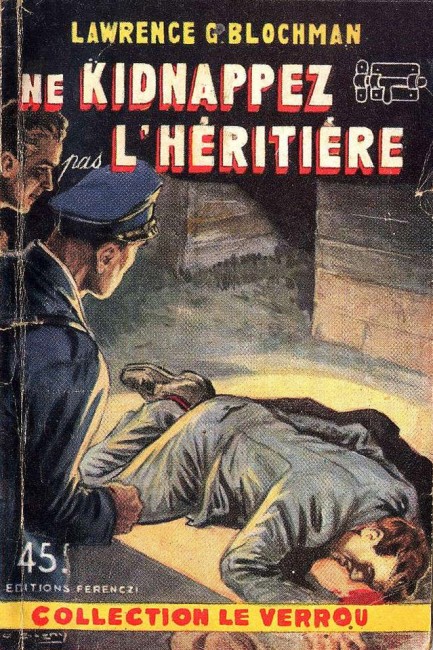 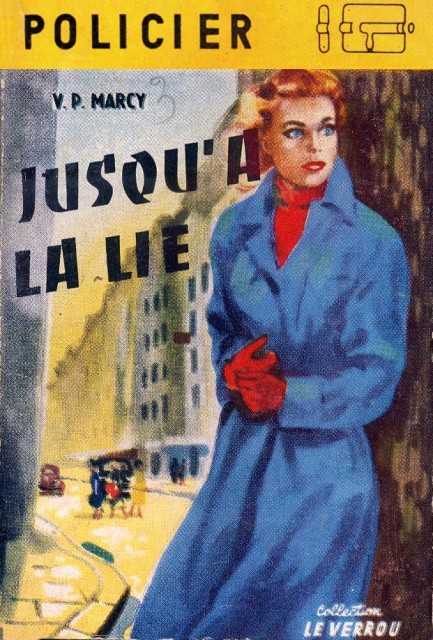  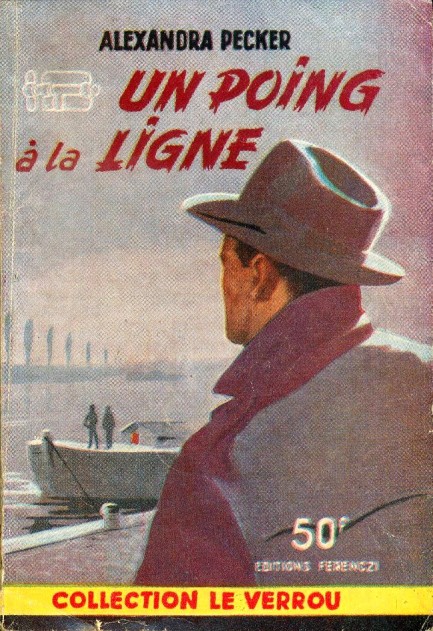 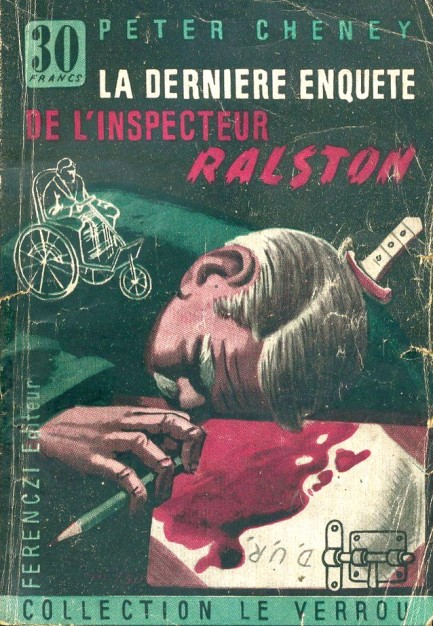 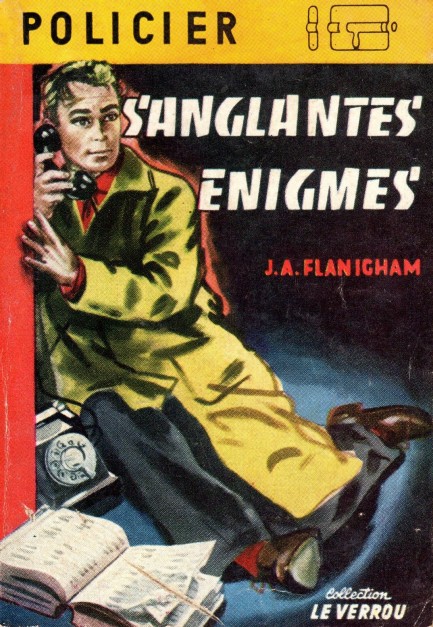 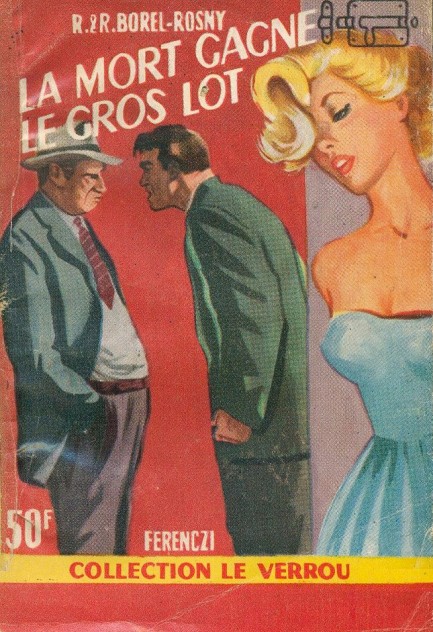 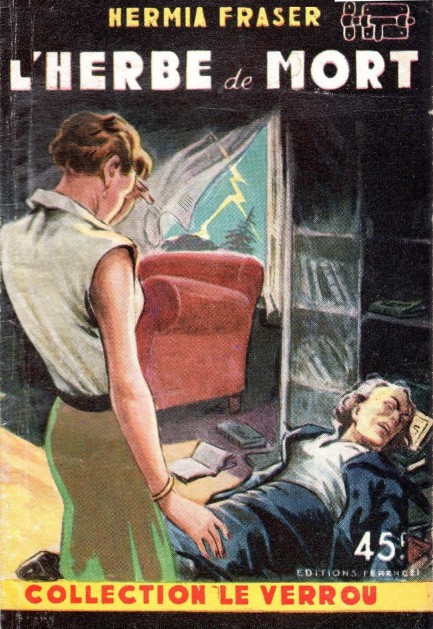 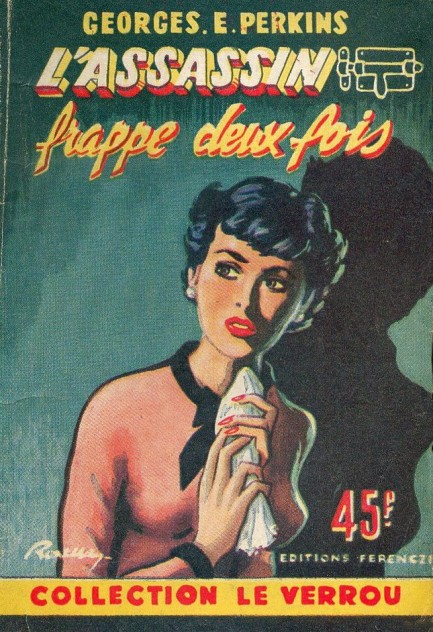 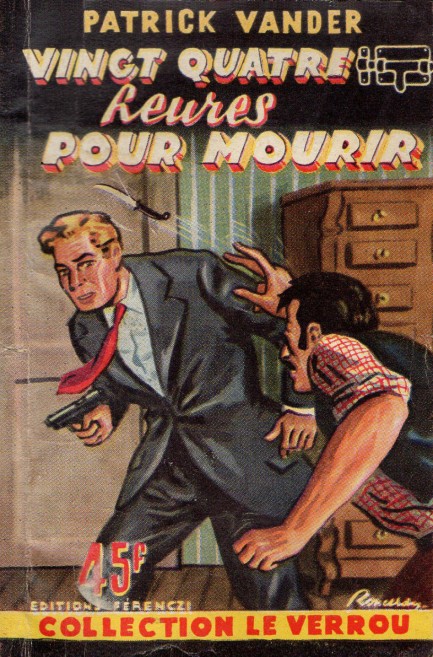 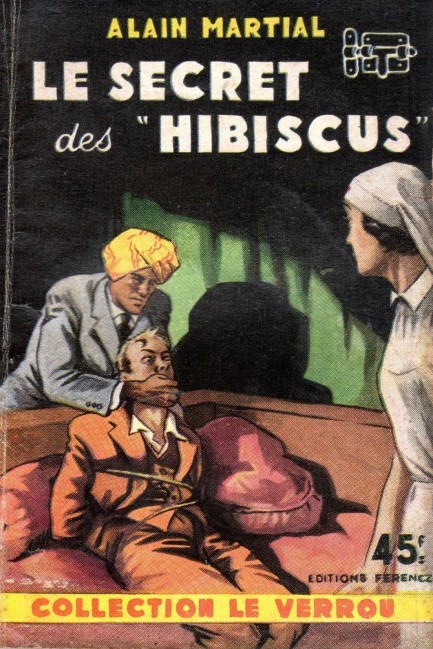
 My goodness, your playing dead has gotten so, um, convincing. 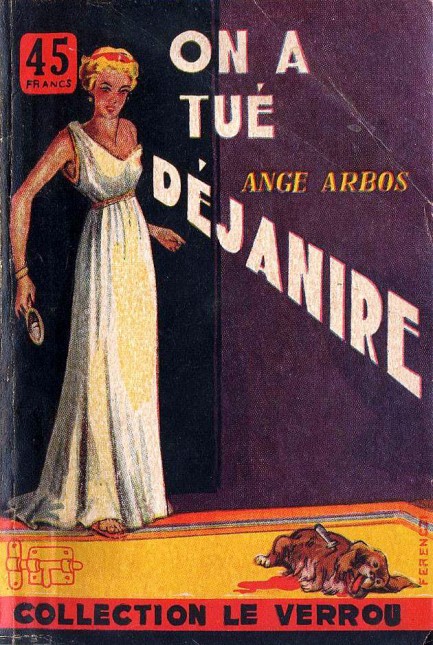
On a tué Déjanire, for which see this interesting cover above, was written for Editions Ferenczi by Ange Arbos, aka Adrien Sobra, aka Marc Agapit in 1952. Arbos was born in 1897 and wrote scores of books, as well as many short stories, the latter notably for Mystère Magazine, which was the French version of Ellery Queen’s Mystery Magazine. Arbos’ fiction was pretty dark, ranging from the Hitchcockian suspense to pure horror and fantasy. We’ll get back to him later. Today we just wanted to show you the art, which gave us a laugh. But then again, it would. We’re cat people.
 To make a long story short. 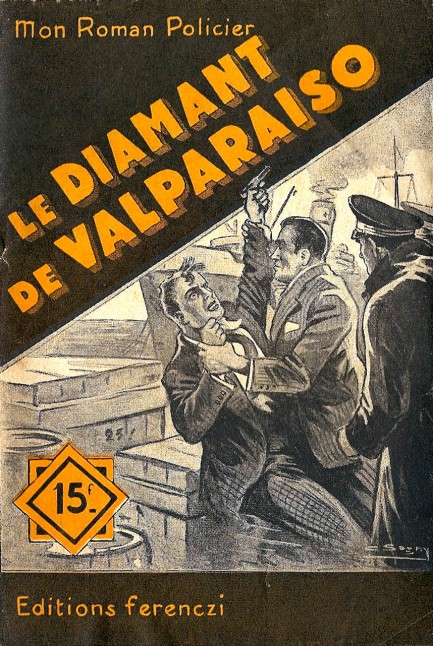 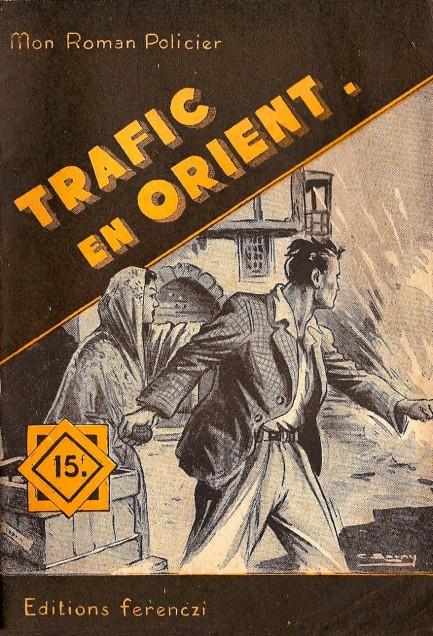 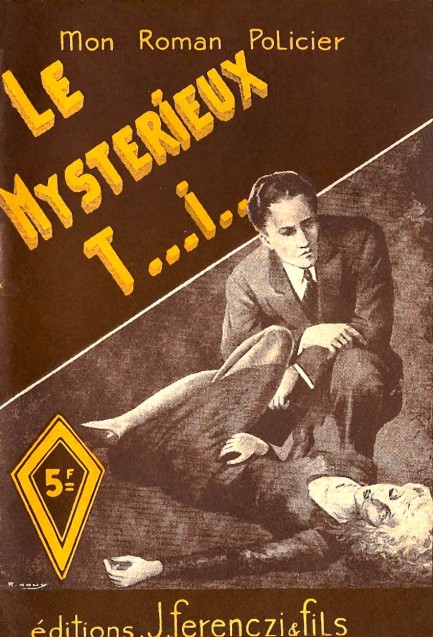
During our Paris trip a while back we found this trio of roman-policiers from Editions Ferenczi, 1952, and Editions J. Ferenczi & Fils, 1947, and after some hard bargaining snatched them up for six euros. J. Ferenczi was Hungarian-born Joseph Ferenczi, one of the main guys in Parisian pulp publishing during the first half of the twentieth century. These three booklets were written by Jean Voussag (Le diamant de Valparaiso), Paul Tossel (Trafic en orient), and Jean Dryer (Le mystérieux T… i…), and they run thirty-two pages, just about the right amount of time for a commute via train or metro. Too bad this concept has died—we’d certainly buy a cheap mini-book for a bus ride or short plane flight. Considering how traditional publishing has fallen on hard times, you think they’d explore the possibility that this market still exists. Anyway, you’ll be seeing more French pulp from us soon. Our plan is to empty our French shelf in the next couple of months and tote all this stuff back to the original booksellers to trade. Will they actually take it back? Who knows? But any excuse to go to Paris in the spring is a good one.
|
 |

The headlines that mattered yesteryear.
2003—Hope Dies
Film legend Bob Hope dies of pneumonia two months after celebrating his 100th birthday. 1945—Churchill Given the Sack
In spite of admiring Winston Churchill as a great wartime leader, Britons elect
Clement Attlee the nation's new prime minister in a sweeping victory for the Labour Party over the Conservatives. 1952—Evita Peron Dies
Eva Duarte de Peron, aka Evita, wife of the president of the Argentine Republic, dies from cancer at age 33. Evita had brought the working classes into a position of political power never witnessed before, but was hated by the nation's powerful military class. She is lain to rest in Milan, Italy in a secret grave under a nun's name, but is eventually returned to Argentina for reburial beside her husband in 1974. 1943—Mussolini Calls It Quits
Italian dictator Benito Mussolini steps down as head of the armed forces and the government. It soon becomes clear that Il Duce did not relinquish power voluntarily, but was forced to resign after former Fascist colleagues turned against him. He is later installed by Germany as leader of the Italian Social Republic in the north of the country, but is killed by partisans in 1945.
|

|
|

It's easy. We have an uploader that makes it a snap. Use it to submit your art, text, header, and subhead. Your post can be funny, serious, or anything in between, as long as it's vintage pulp. You'll get a byline and experience the fleeting pride of free authorship. We'll edit your post for typos, but the rest is up to you. Click here to give us your best shot.

|
|


























































































